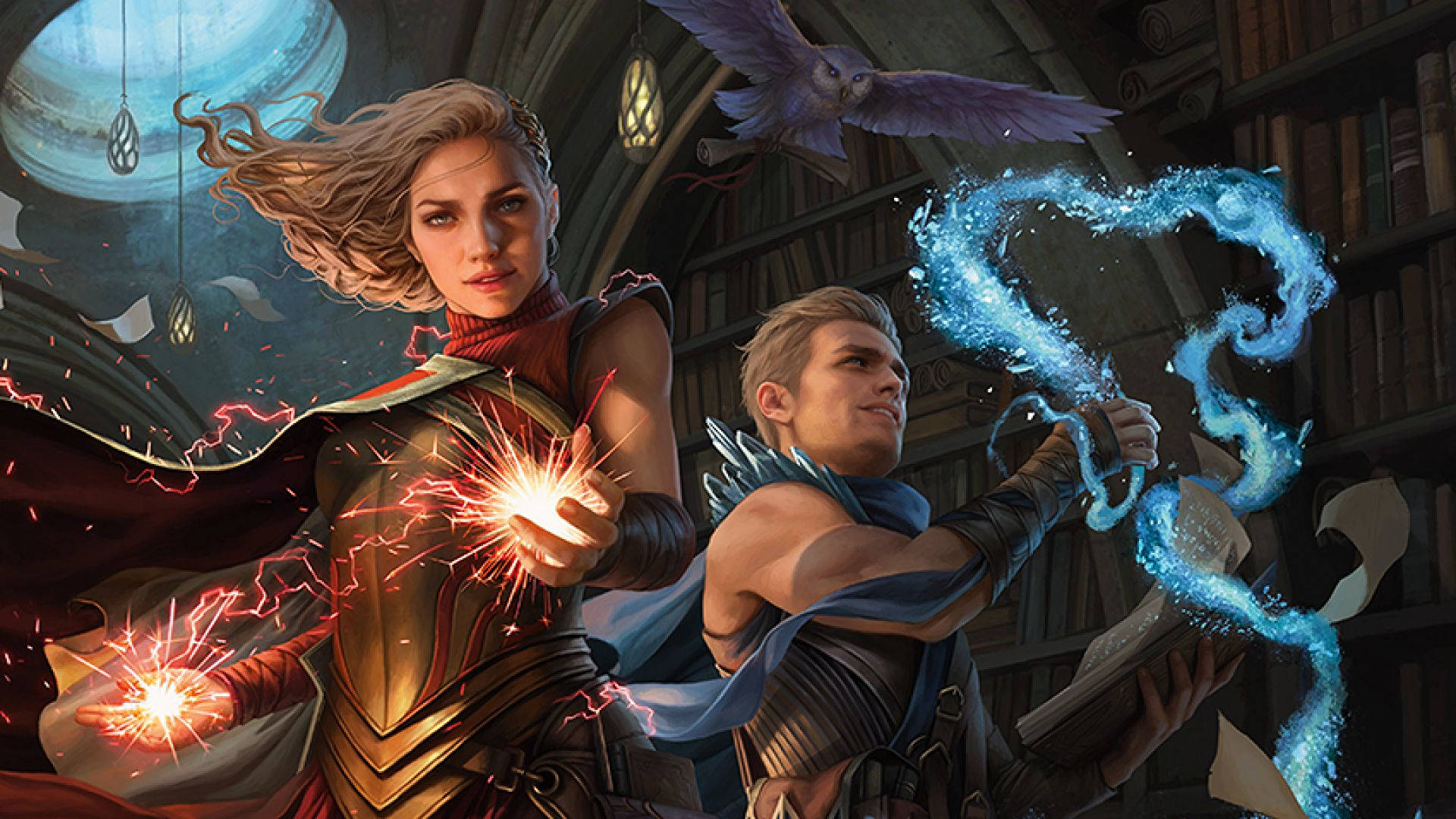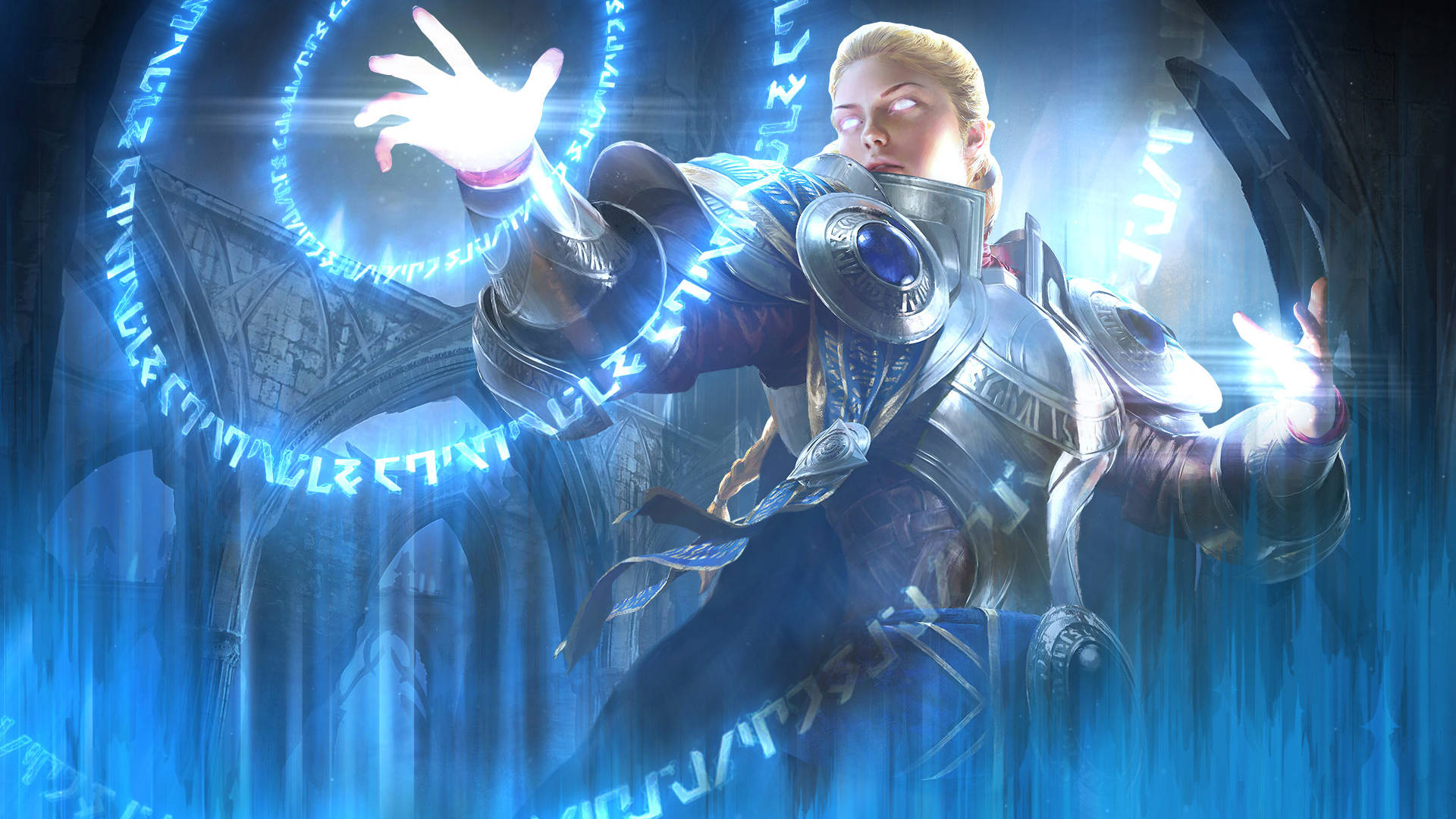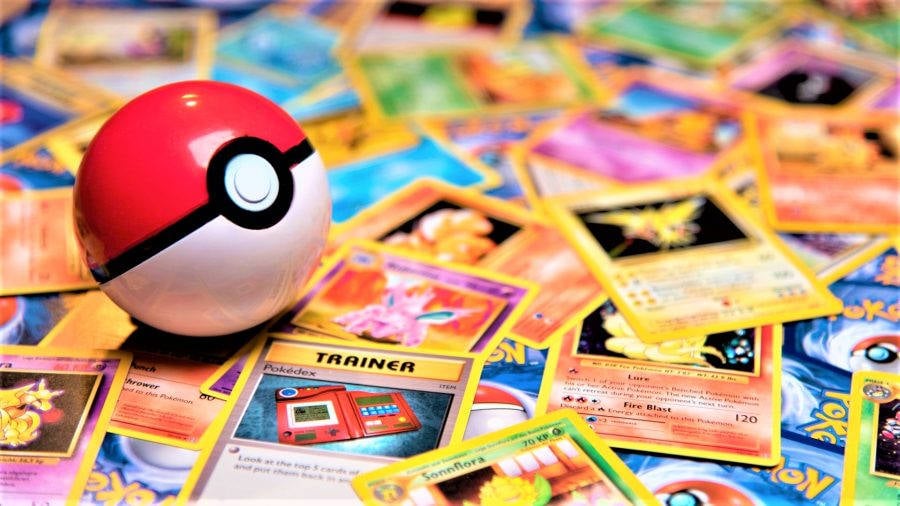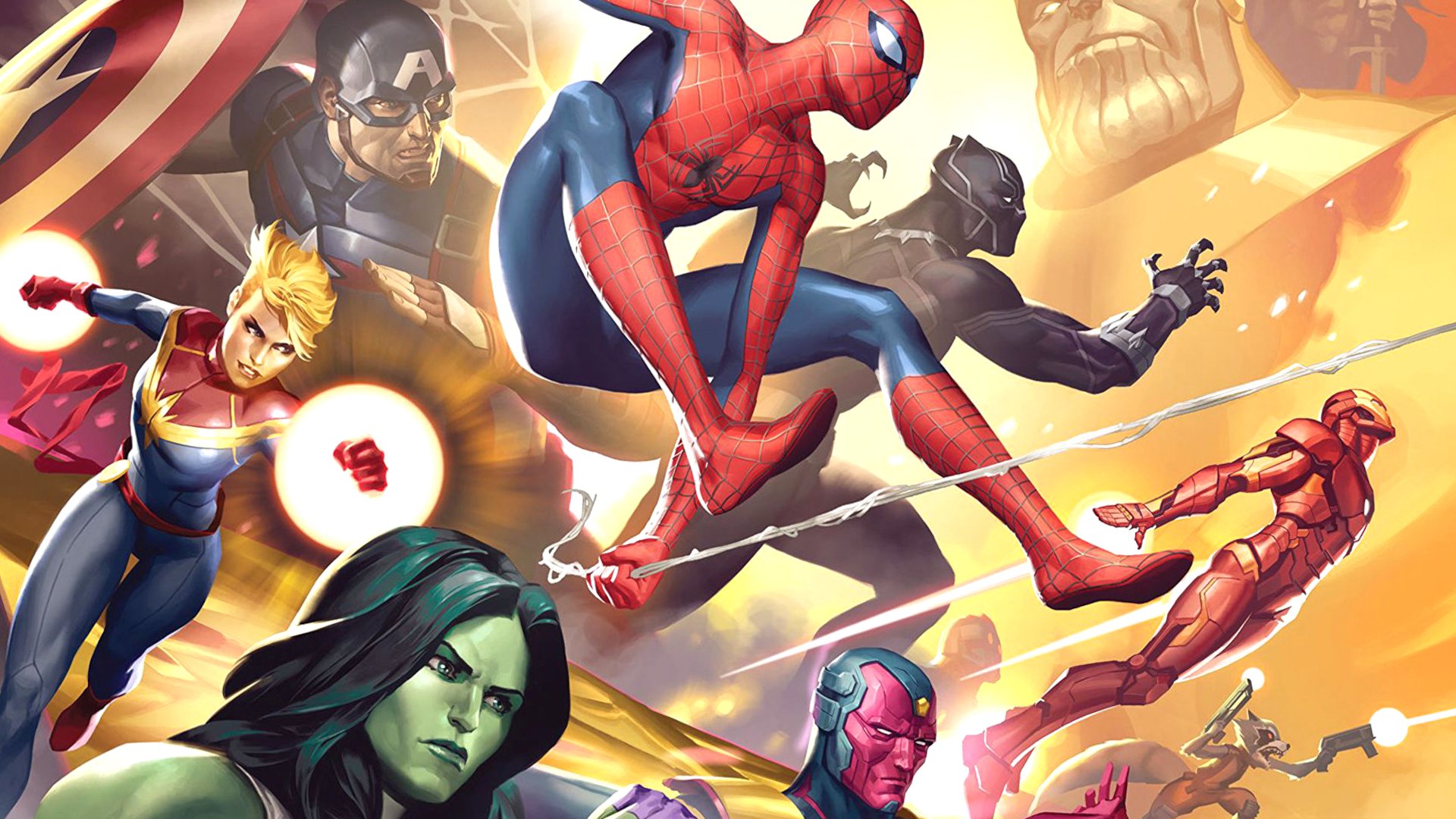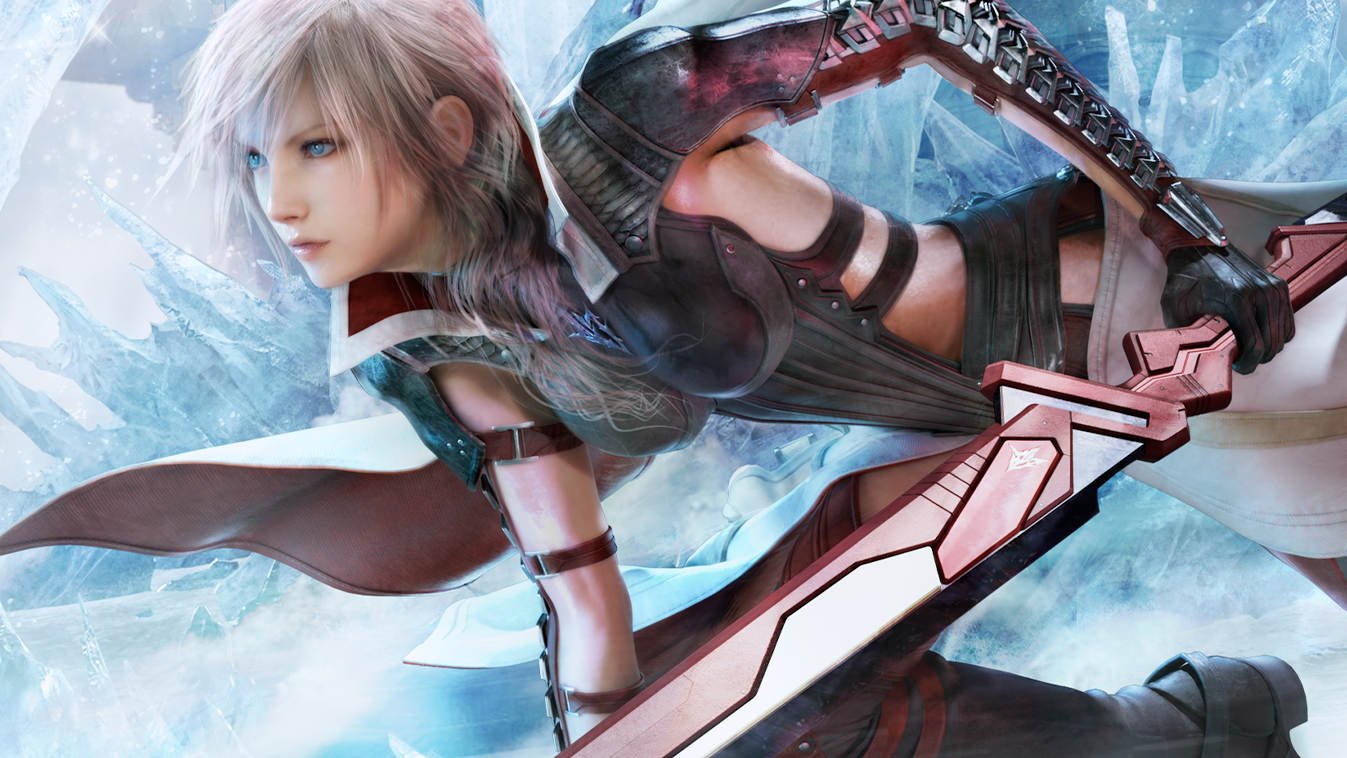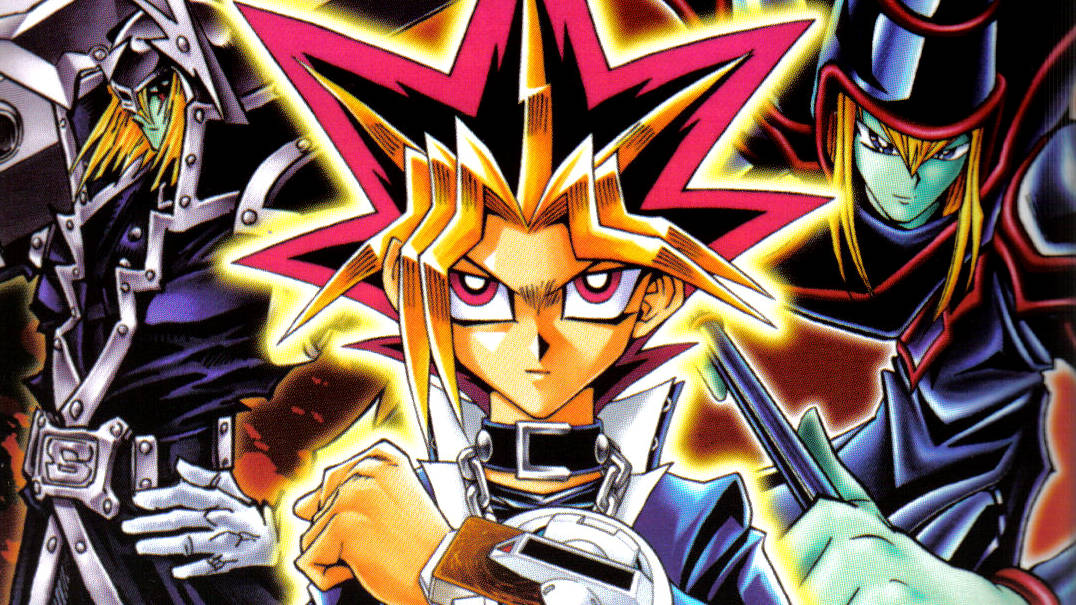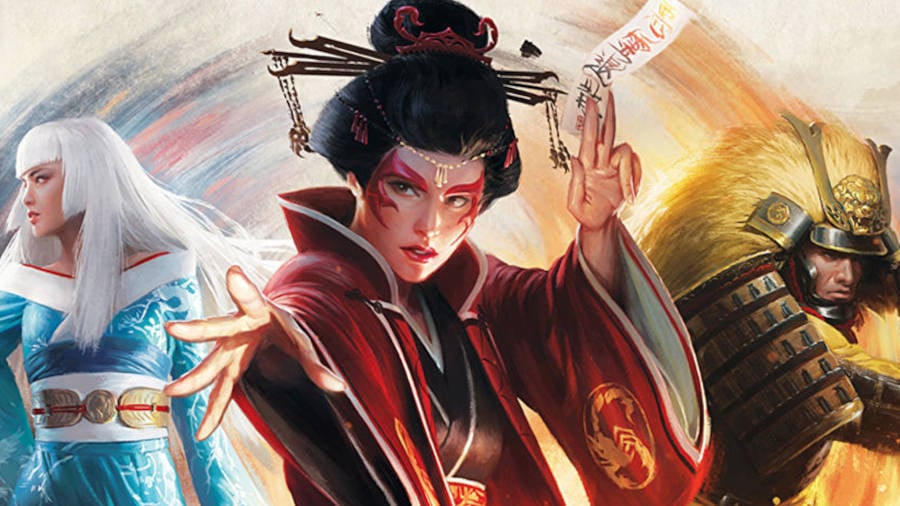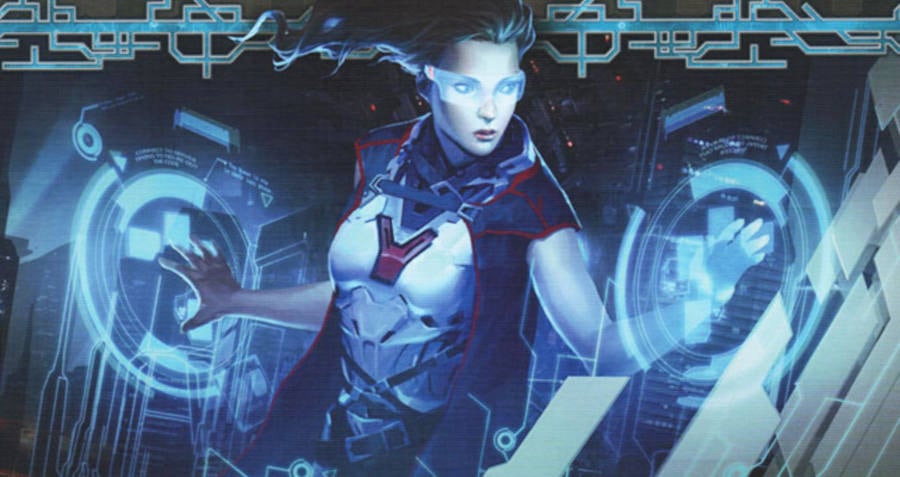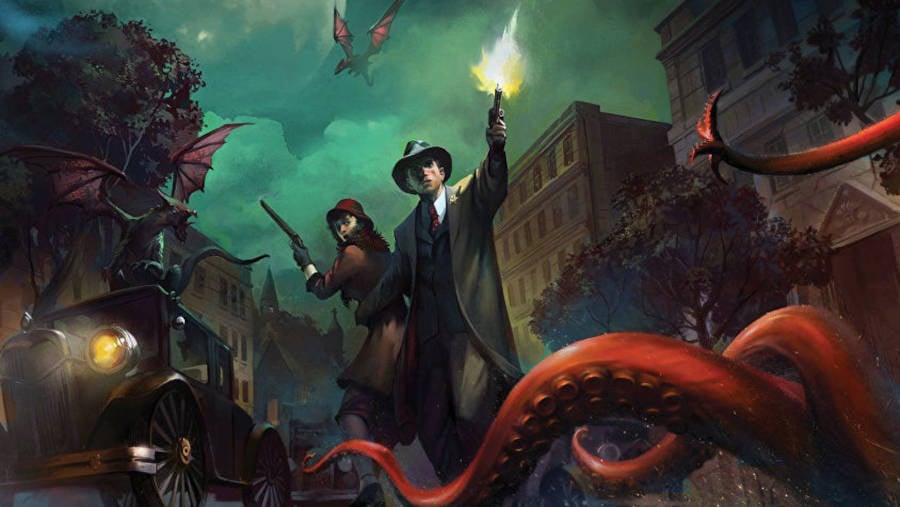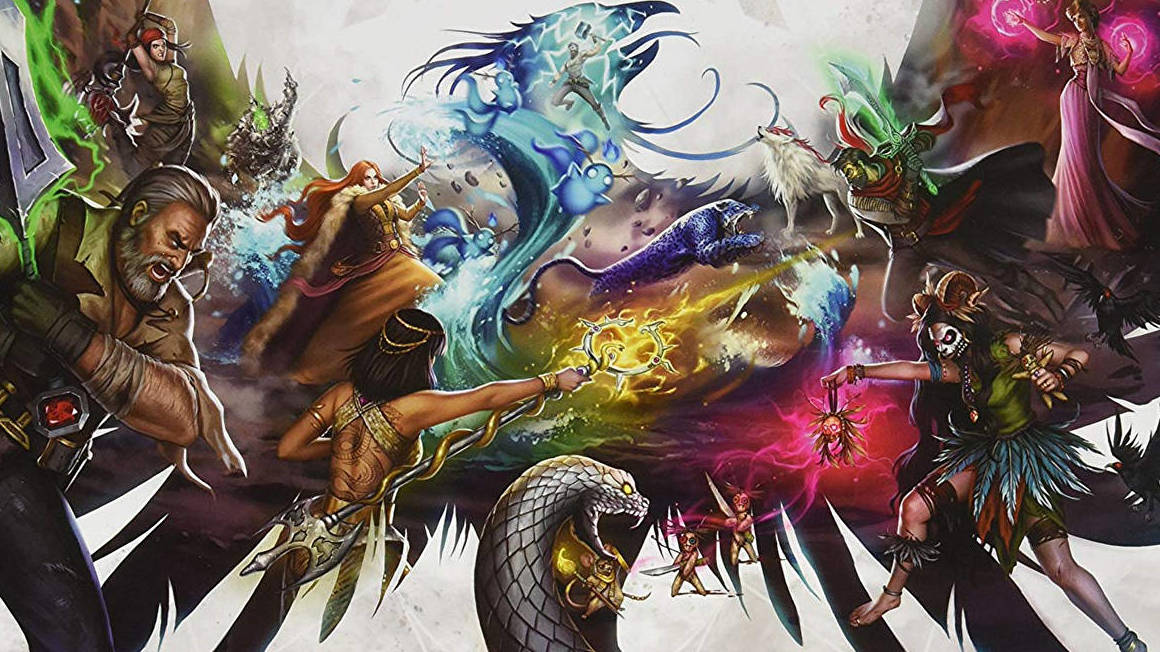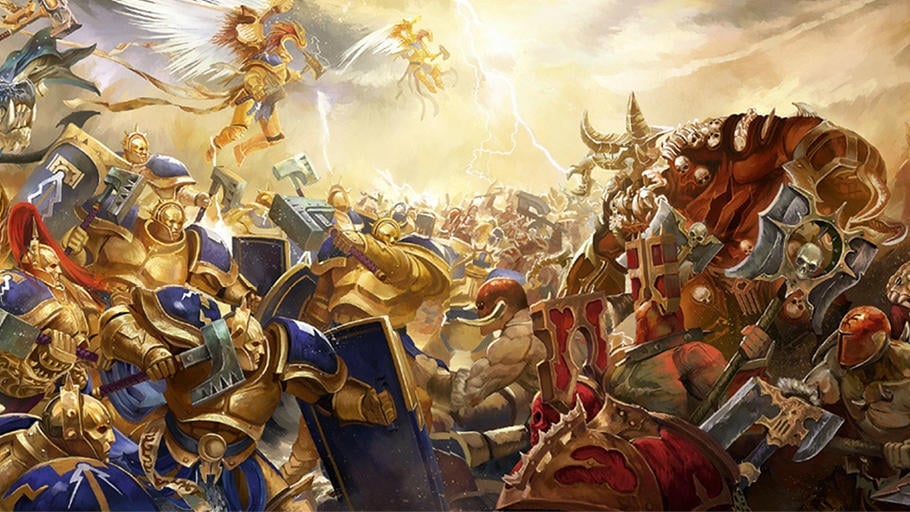What are the best trading card games (TCGs) in 2023? It’s a tough field. We’ve played an awful lot of collectible card games (CCGs) over the years, with countless publishers looking to bottle the same lightning as Richard Garfield’s Magic: The Gathering, recreate the collectible joy of Pokémon cards, or match Yu-Gi-Oh! cards’ surrealist shenanigans – and some have succeeded. This guide profiles the best trading card games around, to help you pick your next cardboard adventure.
You’ll likely have tried some already (they’re some of the best card games around, after all) – but others might be unfamiliar in both name and style. Though they vary wildly in gameplay, systems, and themes, they all share the core joys of CCGs: expanding the scope of the game over time, discovering cool new cards and decks, and deploying them in a skill-based strategic challenge.
For superb games without the collectible/trading element, try our guides to the best two-player card games; the best card games for adults; the best deck-building games; or the best family card games to enjoy with the young’uns. Oh, and if you need a laugh, check out our favourite funny card games. Otherwise, shuffle up and get ready, because…
The best trading card games in 2023 are:
A note before beginning. Don’t be put off by the less well-known term ‘living card game’. LCGs operate just like TCGs and CCGs, but use fixed expansion packs rather than randomised booster sets, saving some guesswork and spending on your part.
Magic: The Gathering
The original. The master. The granddaddy of trading card games. Magic: the Gathering has all the acclaim and mythos it deserves. You’ve likely come across its illustrious cards, but might not have dipped your toe into the vast, and admittedly intimidating, world of competitive summoning. You don’t need to be a master strategist, a collector of rare MTG cards, or a dedicated lover of the Multiverse to learn how to play MTG (or fall in love with it). Easy to play, but hard to master, it’s worthy of testing out, even just for the card-curious.
MTG’s core gameplay is simple, largely because it established the standard for most trading card games that followed. Assemble a deck of creatures, enchantments, artifacts, MTG planeswalkers, and more, before duelling in a frenzy of monster-summoning, attack-blocking, and combo-forming brilliance. MTG land cards must be played to generate mana, which in turn is used to summon creatures, and cast various spells, with each MTG color representing its own flavour of play. Whittle your enemy’s life to zero, and you’ll be declared the winner.
Successive releases of new MTG sets introduce more cards, and new mechanics each year, and its organised play community is ever-growing. Take one look at the MTG 2023 release schedule, and you’ll see just how much new content is coming out all the time. Spend hours learning how to build an MTG deck for the most efficient summoning, or experiment with unused colour combinations.
Alongside a range of game formats (dictating deck size, MTG banlist restrictions, and other gameplay requirements), MTG has an indefinable depth. But you can also have fun by just picking up a starter set, and blasting through a few mono-colour matches with your mates.
Throw in gorgeous card art that far supersedes the quality and detail of most, if not all, other trading card games around, and you’ve not only got a game that’s fantastically tactical, but one chock-full of artworks that could serve as mantlepiece displays.
The game’s latest digital adaptation, Magic: the Gathering Arena, is an accurate, and butter-smooth interpretation of the tabletop game. All the cumbersome calculations and too-easily-forgotten keyword abilities are taken out of your hands, and the on-screen play area’s arranged to make information easily accessible, without obscuring any action. A tutorial walks you through all the rules and fundamental strategies of each mana colour, and a wealth of free MTG Arena codes will give you a stack of free digital cards to get started with.
Pokémon cards
Everyone knows about Pokémon cards. The competitive Pokémon Trading Card Game – which has you throw down your prized cardboard pocket monsters to fight, faint, and evolve into increasingly beefed-up versions of their former selves – has been a staple of playgrounds and international gaming tournaments since the 90s. And its appeal hasn’t diminished since.
The core game remains the same, and all your favourite Pokémon are still kicking about – plus a lot of cutesy new additions. Our ‘how many Pokémon are there‘ guide – and Pocket Tactics’ excellent Pokédex – currently list the total number of Pokémon as 1,015 – but change the question to ‘how many Pokémon cards are there‘, and that number shoots all the way up to 13,178.
If you’re only familiar with Pokémon from the long line of Nintendo videogames, or the franchise’s anime TV series, rest assured the trading card game replicates their battles near-perfectly. There’s even a fresh way to play the game digitally on the way, in the form of Pokémon TCG Live.
Play Pokémon from your hand to your bench, expend energy cards to launch attacks, use trainer cards for a supportive advantage, and evolve your Pokémon mid-game to spawn their more advanced forms. More recent, optional gameplay modes complicate things, but its basic operation is simple, and massively gratifying. It’s just plain fun to watch your meek Cutiefly evolve into a deadly Ribombee.
Much of the game has been taken over by collectors focused on bagging the most rare Pokémon cards for cash – or completing their expansive cardboard Pokédex – rather than battling creatures on the tabletop. But the game’s tournament community, where the best Pokémon decks are forged and tested, still thrives, and, with new sets releasing regularly, the Pokémon TCG is still very much alive.
Marvel Champions
The Marvel brand has been plastered onto just about every type of merchandise you can think of, and that includes Marvel board games and card games. But while Marvel Champions is notable for its vast roster of masked adventurers, it doesn’t stand out solely because of its theme. It’s the gameplay of this living card game that’s unique: this is a co-operative game.
You and up to three buddies will each assume the mask of a superhero, and do battle with a random villain terrorising the neighbourhood. Each player takes performing gravity-defying attacks, summoning allies to the fray, and upgrading their power to fend off whatever evil minion is thrown their way. All the while, you’ll be working to thwart the dastardly scheme of your main target, before their master plan is unleashed.
Be prepared to face a steep learning curve, and keep the game’s rulebook handy for your first few games. But once you internalise its turn order and learn the varying strategies of each heroes’ deck, you’ll be rewarded with a well-balanced, co-operative action game. Handing just enough decision-making to each player, the game lets you strategise as a team, without ever feeling like one player is able to dominate.
Plus, Marvel Champions is still very much alive, with more expansions and hero packs releasing. You’re certain to find your favourite costumed crime fighter in its ranks.
For more information, and a deep dive into one of Marvel Champions expansions, check out our Marvel Champions: Mutant Genesis review
Final Fantasy Trading Card Game
Inspired by Square Enix’s legendary series of RPG videogames, the Final Fantasy Trading Card Game is now a decade old in its native Japan, but was only released to the wider world in 2016. You’ll find familiar faces from across the franchise’s long history, in this competitive, two-player TCG that’s visually inspired by Final Fantasy characters and monsters, but mechanically distinct from the JRPG.
Gameplay-wise, it’s similar to Magic: the Gathering. You’ll spend Crystal Points of particular Element types to play cards, before flipping them horizontally to use their powerful effects, and ‘activating’ them at the start of your next turn (much like the typical mana-driven summon-tap-activate loop of MTG). Use characters and monsters to deal damage to your opponent, and block incoming attacks with your minions on the field.
But some notable gameplay differences remain. With no resource cards or land-equivalents, Crystal Points are generated by playing and discarding cards from your hand. It forces you into constant difficult decisions, as you weigh up whether it’s best to hold out another turn, or sacrifice your hand to quickly field characters to the table. Character cards only have one fighting stat, representing both their attack and defensive abilities, and the lack of combat keywords streamlines the fighting process.
The Final Fantasy Trading Card Game manages to reverently bring the acclaimed videogame series to the tabletop without feeling like a quick cash-grab or uninspired reskin. Characters’ abilities echo their in-game selves, and its level of strategy makes it enjoyable for those who’ve ever delved into the monstrously large series. Pick it up if you’re after an MTG alternative with a bit of bite.
Yugioh cards
Anime-styled, unashamedly unhinged in theme, and joyfully chaotic to play, Yugioh cards, and fondly remember hurriedly duelling between classes, or showing off your newly-built deck in the playground. If you did, you probably didn’t follow any of the Yugioh banlist regulations, ignored its tribute summoning rules, and filled your deck with as many Pot of Greed cards as you could (at least, some eight-year-olds we know certainly did).
Based on the 90s manga and following anime, the Yu-Gi-Oh! Trading Card Game has been going strong for over 20 years. There’s never a bad time to learn how to play YuGiOh, though. Take turns summoning monsters to the field, laying traps, and casting spells to destroy your enemy’s defences, and decimate their ‘life points’.
With no resource system, you’re free to play anything in your hand, but you will have to sacrifice smaller monsters as tribute to summon the toughest creatures to the table. Advanced summoning rules can get complex, and you might occasionally find yourself fed up with the jargon, but Yu-Gi-Oh!’s intuitive phase order and hand management make it a great TCG for card-wielding newbies.
With no set rotation, most old cards aren’t removed from the game or made illegal in its meta (except the few dozen on the Yugioh banlist), so it’s remarkably easy to buy some packs, learn how to build a YuGiOh deck, and jump in. Picking up one of the best Yugioh structure decks is also a smart way to get started.
Its artwork will appeal to any manga fans, but really hilarious cards like Humpty Grumpty or People Running About lend the game a sense of self-aware silliness. There are also a couple of excellent ways to play Yugioh online these days – so you’ve no excuse: time to duel!
Keyforge
One of the many card games designed by Magic: The Gathering creator Richard Garfield, Keyforge only released back in 2018, but immediately boasted one of the most rigorously designed cardplay systems, and most enticing metas, across the whole tabletop space.
In a deliberate disruption to the standard card game system, each individual Keyforge deck is complete and unalterable, meaning there are no booster packs or additional cards to buy as you craft the perfect collection. But – and here’s the real kicker – each deck is entirely random, with every set containing a different assortment of cards. Some gargantuan number of possible permutations means that no two Keyforge decks are the same, and a very clever design process makes sure each deck is (largely) balanced.
No deck-building means you can grab a fully-formed, ready-to-use, randomly-constructed set, and dive in immediately. Great if the cost of other card games is an issue, and fantastic for those players who are wary of investing in yet another money-hungry game.
And you’ll be rewarded with a novel rule system that ditches many of the genre’s cliches. Rather than hurling attacks at your opponent to whittle down their health, you’ll be using creatures, artifacts, and action cards to accumulate ‘Æmber’. Acquire sufficient stores of the valuable resource to forge three keys and win the game, all the while disrupting the similar efforts of your opponent.
Also of note: there’s no cost system. You won’t have to expend mana or discard cards to field more powerful creatures, but instead declare a ‘house’ at the beginning of your turn, and play any number of cards belonging to that house as you wish. An innovative take on the card game formula, check out Keyforge if you’re craving something a little bit different.
KeyForge was originally published by Fantasy Flight Games, though they suffered a strange snafu in 2021 that ‘broke’ the algorithm that generated unique decks. Since then the game was picked up by Ghost Galaxy, who’s working on new expansions.
Flesh and Blood
A more grounded, but no less tactically-charged trading card game, Legend Story Studios’ Flesh and Blood dispenses with grand battles between ranks of creatures in favour of brutal fantasy brawls. Rather than fielding monsters and spells to do battle on your behalf, you’ll be dumped in the fight directly to dictate your own magical duel. Choose a character, equip an array of weapons and armour, and plunge forwards into battle, taking turns to play cards that simulate attacks and defensive moves.
Flesh and Blood is all about anticipation. Each attack card requires you to discard another, making for some tense moments of do-I-don’t-I decision-making, as you weigh up the cost of a reckless blow against a shrewd defence. Add in an ‘arsenal’ of hidden attacks, that might halt your opponent’s master plan with a surprise strike, alongside a panoply of distinct heroes, and you’ve got as close to a TCG variant of Mortal Kombat as you’re ever likely to get.
Each game rushes into the action, with no time spent building a resource base or managing your hand. Kick off with a brutal assault, and keep the punches coming.
Legend of the Five Rings: The Card Game
Set in the East-Asian-themed fantasy world of Rokugan, Legend of the Five Rings: The Card Game hands you control of one of seven clans to battle for supremacy in the game’s eternally conflictual political system. The basics are familiar enough: field warriors and nefarious political leaders onto the tabletop to attack your opponent’s provinces, and crush their stronghold to win the game. Use ‘attachments’ to your characters, and ‘holdings’ to improve the abilities of your provinces.
But Legend of the Five Rings’ main mechanical flavour stems from its ‘fate’ system. You might arrange a killer frontline that will have your enemy weak at the knees, but characters won’t stick around for long. On each turn, every played character loses one ‘fate token’. If their token count drops to zero, they’re swept out of play.
Prop up your most powerful characters with extra tokens, and try to anticipate which cards will be of most use in the upcoming rounds. Of course, you can also play offensively, removing tokens from your opponent’s characters, and wiping clean their side of the table.
For all its acclaim, publisher Fantasy Flight axed Legend of the Five Rings: The Card Game in 2021. But the mammoth supply of previously-released boosters and sets still provides much content to dig into. Plus, there’s always the Legend of the Five Rings roleplaying game, if you need to satiate that mythical-Feudal-Japan itch.
Android: Netrunner
A brutish, cyberpunk dystopia of megacorporate profiteering and dubious cybernetic enhancements, Android: Netrunner could be applauded for offering a card game that isn’t baked with fantasy tropes, but it has something much better to get excited about – balanced asymmetrical gameplay.
One player takes the role of a corporation, advancing its heinous agenda and accumulating credits to satiate the profit wheel. All the while, they must spread their tendrils along the information superhighways of the future, securing data terminals against the opposing runner (or hacker) who’s attempting to break their firewall. With each player served totally different mechanisms of gameplay, and vastly different objectives, it makes for a complex game of surprises.
But the main difficulty in playing Android: Netrunner will be finding a copy. Discontinued in 2018 despite much popular admiration, starter sets are hard to come by, and you’ll have more luck in the second-hand market than from retailers. The game’s refined asymmetry – which, for our money, has yet to be matched in other card games – as well as a bunch of fan-made content projects that emerged after its cancellation, has kept Android: Netrunner one of the best LCGs around.
Arkham Horror: The Card Game
The card game variant of Fantasy Flight’s much-acclaimed Lovecraftian board game of the same name, Arkham Horror The Card Game is a living card game of eldritch mystery, and one of the best horror board games around. Played as a solo board game or cooperatively across a persistent campaign, you’ll assume the role of an investigator, following a breadcrumb trail of phantasmal peculiarities, and otherworldly insanity, through the haunted streets and decrepit houses of Arkham.
Investigators are split into classes, and you’ll have to build a bespoke action deck to overcome the many monsters and traps thrown your way. But Arkham Horror plays out as more of a mystery game than an action scenario. Explore new locations to uncover their secrets, and attempt to fulfil the objectives of the scenario before you succumb to a loss of sanity, or meet a grizzly end at the appendages of some tentacular horror.
Despite the glut of Lovecraftian tabletop offerings out there, Arkham Horror: The Card Game might have a good claim to capturing the cosmic mystique and psychological absurdity of the Cthulhu-mythos best. Each scenario of the many, many expansions, feels true to form, but has enough variance in storytelling and setting so as not to feel overplayed.
But the game’s brilliance comes from its persistence. Played through a series of set scenarios, your choices have lasting effects on the unfolding plot of later missions. Your investigator will twist and squirm under the horrors that you uncover, adding a nice RPG flavour to the card game.
Ashes Reborn: Rise of the Phoenixborn
Command an all-powerful ‘Phoenixborn’, and field an array of magical beasties and conjuration spells in this competitive, two-player expandable card game. Pick cards to attack, block incoming blows, and leverage the stand-out abilities of your hero Phoenixborn to turn the tide of battle.
But Ashes: Rise of the Phoenixborn stands out for one element that will either pique the interest of card game enthusiasts or have them shuddering in disgust – dice. Your available resources for fielding units and casting spells are determined by a pool of the six-sided fellows, adding an element of luck, but, more importantly, providing a new avenue for strategic deliberation.
A mixture of card-discarding and dice-rerolling lets you bolster your current force on the table, or shore up your chances of a powerful future hand. The dice serve as a baseline restriction on your abilities – it’s your job to figure out how best to turn the situation in your favour.
The ‘Reborn’ version of Ashes is effectively a new edition of the card game, rebalancing and rewording several of its cards, as well as introducing new content, and upcoming expansions. And the game’s price point shouldn’t be forgotten. With six pre-built decks included in the base set, alongside extra cards for customisation, it’s remarkably easy for a group of friends to explore the game together.
Warhammer Age of Sigmar: Champions
Did you know Warhammer Age of Sigmar has a spin-off trading card game? We bet you didn’t. Despite some fanfare when it launched in 2018, Warhammer Age of Sigmar: Champions quickly fell off the radar, and has been widely overlooked by Warhammer enthusiasts, and card game aficionados alike.
But behind a poorly-publicised physical release, and a monetarily predatory digital adaptation, lies a quick-fire, streamlined trading card game with all the beautiful art of your favourite Age of Sigmar armies that you could hope for. Align yourself with the Grand Alliance of Order, Chaos, Destruction, or Death, and play cards to field units, cast spells, and summon powerful ‘Champions’ to do battle in the best way possible – assailing your opponent with physical harm of every kind possible.
Your ultimate objective is to run down the health of your opponent, but unique ‘quest objectives’ will have you deploying certain units, or using specific abilities, to accrue extra buffs, and hasten your victory. Card order and the arrangement of unit lanes is also important for resolving ability effects, encouraging some forward planning and positional thinking.
With decks consisting of only 38 cards, and matches lasting around 20 minutes, Champions works best when played fast. Plus, getting to play Archaon the Everchosen, and namecheck other Warhammer beloveds, feels pretty great. The fact that the game flopped also means that you’ll have no trouble picking up cards from retailers, or second-hand, for very cheap.
Source: Wargamer



